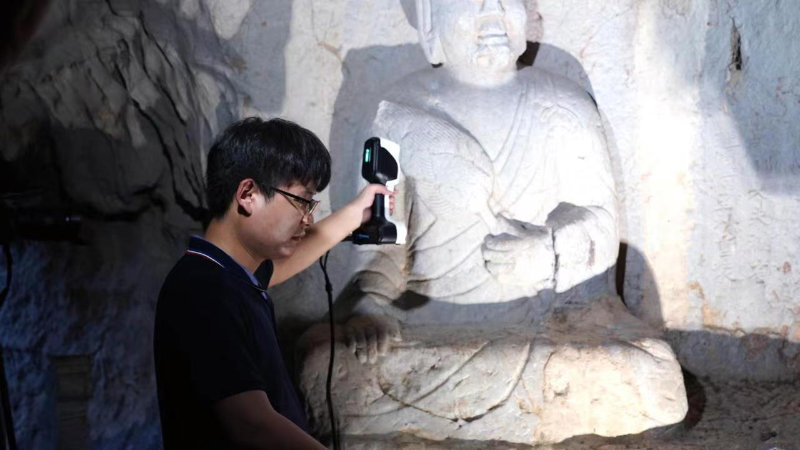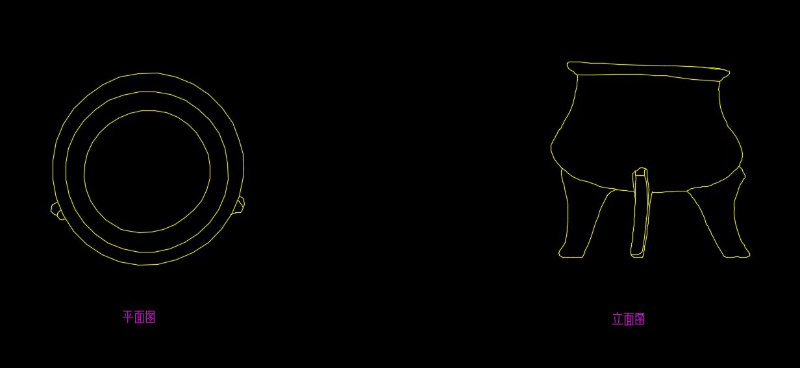Case Studies on 3D Digitization of Cultural Relics
11/03/22
Using the 3D digital modeling technology of cultural relics, accurately obtain the 3D information of their texture and size, establish 3D models of precious cultural relics, and effectively carry out digital protection for them.
3D digitization can provide important data support for the digital protection of precious cultural relics.
There are three major types of 3D models that 3D digitization of cultural relics normally outputs:
- High-precision 3D model: used in data archiving, scientific research analysis, heritage restoration, 3D printing and reproduction, damage identification, etc.;
- Line map of cultural relics: Draw line maps faster based on 3D models, record relics scientifically and vividly in the form of points, lines, and surfaces, and use them to study the decoration, craftsmanship, and other information on cultural relics;
- True color 3D modeling: applied to the digital display system, panoramic reconstruction of the virtual exhibition hall, animation production of education display, 3D model display system on the mobile terminal (such as WeChat), offline multimedia touch display system, etc.
In this article, we will introduce the three types of 3D models respectively.
3D scanners:
- iReal 2E handheld 3D scanner
- SIMSCAN 3D laser scanner
- KSCAN-Magic 3D laser scanner
- TrackScan 3D scanner
Notes:
- When using KSCAN-Magic and SIMSCAN, you need to stick markers on the scanning auxiliary to obtain 3D data of the scanned object. If the scanned object cannot be stuck with markers and the scanning auxiliary cannot help, it is more suitable to scan relics within 50 cm (if the size is too large, markers need to be placed on the scanned object). The price of KSCAN-Magic is moderate.
- TrackScan can realize non-marker scanning, especially for medium and large-sized cultural relics, however, its price is relatively expensive.
Cases on 3D digitization of cultural relics – high-precision 3D model
Case 1: 3D scan Yanxia Dong
3D scanning medium and large-sized carved artwork and objects with matte surfaces (the recommended scanning size should be larger than 50 cm, suitable when the requirements on color restoration and accuracy are relatively low.
Case 2: 3D scan ancient wall carvings
3D scanners: KSCAN-Magic, TrackScan 3D scanner series
Case 3: Yunnan Lufeng Dinosaur 3D Digital Protection

Case 4: 3D Printing and Restoration of Root Carving
Case 5: 3D Derivative Production of Wulin Ancient Building
Field study → Partial scanning of buildings → Data processing (forward + reverse) → 3D printing
Case 6: 3D Rubbings of Ancient Epitaph
Cases on 3D digitization of cultural relics – line map of cultural relics
Case: 3D Scanned Model Helps Accurate Line Drawing
Cases on 3D digitization of cultural relics – true color 3D modeling
The true color 3D modeling method will be using iReal 3D mapping software.
Process:
- 3D scan to obtain 3D data (monochrome) of the surface of the item, such as stl, obj.
- Optimize the acquired 3D data through 3D software (filling holes, carving, reducing surfaces, etc.).
- Obtain pictures from all angles of the item through the SLR in a uniform light environment.
- High-efficiency texture mapping is achieved through the iReal 3D mapping software.
Data acquisition hardware equipment:
- handheld laser 3D scanner, SLR, and shooting kit (fill light, color calibration card, automatic turntable)
The post-processing software mainly involves:
- iReal 3D mapping software, Photoshop
- Other post-processing software: Geomagic Wrap, ZBrush, Marmoset Toolbag
Whole Process of Porcelain Texture Mapping (Video Tutorial)
Overview:
Necessary skills: 3D scanning, professional SLR photography, Adobe Photoshop
Model optimization software: Geomagic Wrap, ZBrush, 3DS Max, etc.
Texture mapping software: iReal 3D mapping software, Adobe Photoshop
Products, Solutions&Services Available:
1. 3D scanners and iReal 3D mapping software for sale
2. Value-added services for Scantech users: such as data post-processing, texture mapping services, assisting in solving large quantities/difficult parts processing, etc.
The optimal solution for high-precision 3D digitization of cultural relics:
Reverse modeling (mainly with handheld 3D laser scanners, supplemented by handheld speckle scanners) + 3D modeling/3D model optimization + SLR + texture mappings.
If there are many types of materials and sizes to be scanned, it is recommended that various tools (different types of 3D scanners) be flexibly matched to be the best solution.
For true color 3D modeling cases made by iReal 3D mapping software, please click here.
Related Articles
View Our Product





























